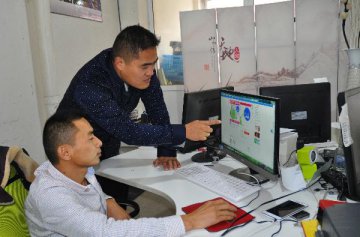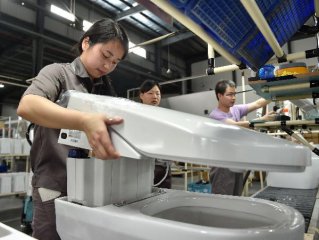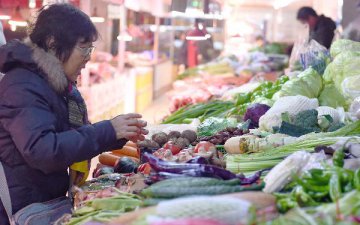
Many institutions recently estimated that affected by the Spring Festival which crosses two months, the growth of China's consumer price index (CPI) in February 2017 might drop to less than 2 percent, while producer price index (PPI) might further climb by over 7 percent, representing further widening scissors difference between CPI and PPI.
Journalist of the Economic Information Daily learnt that food prices in February dropped markedly from that of previous month. The price index of edible agricultural products announced weekly by the Ministry of Commerce (MOC) shows that the price of main agricultural products like poultry, eggs, vegetables and aquatic products in the first three weeks of February all dropped month on month. According to data provided by the National Bureau of Statistics (NBS), the average price of main food in 50 cities almost all dropped during Feb.1-20.
What’s more, the hike of non-food price constantly narrows too after the Spring Festival. Lian Ping, chief economist at the Bank of Communications, remarked that carry-over effect in February will drop largely from 1.5 percent in January to -0.05 percent. With various factors taken into consideration, it is preliminarily estimated that CPI in February 2017 might grow 1.3-1.5 percent from a year earlier, representing a large drop from that of previous month. It is also the first time for CPI to record a growth less than 2 percent after several months. Besides, since carry-over effect in March and April is still weak, a year-on-year growth around 2 percent is expected in the following two months. As carry-over effect improves, the CPI in May and June might still rise, but it will drop again in the second half due to carry-over effect and new price-rising factors.
Chu Jianfang, chief economist of CITIC Securities, also believed that it is highly possible that CPI will drop to around 1.8 percent in February. Chu indicated that the high base this year will lead to slow year-on-year growth of vegetable prices, downward trend of hog cycle and stagnate of rising food price. Non-food price will remain as the main driver behind price hike, but it is not able to push CPI to grow largely.
It is noteworthy that several experts hold that the PPI in February will further climb and widen the scissors difference between CPI and PPI.
It is learnt that market price of main production materials in China continued to rise in February on the whole. According to price trend of production materials announced weekly, prices of non-ferrous metals had turned drop into rise, and the prices of ferrous metals and rubber products all rose. Lian expected that a month-on-month growth of 0.1-0.8 percent of PPI in February. Since the PPI in February last year recorded a month-on-month growth of -0.3 percent, negative growth in the base period will help to push up year-on-year growth. The carry-over effect hit 6.42 percent in February 2017, the highest throughout the year, and PPI will further climb. With various factors taken into consideration, the year-on-year growth of PPI in February will range from 7.4-8 percent with a mid-value of 7.7 percent.
Chu indicated that as local governments roll out 2017 fixed-asset investment plan in succession, domestic prices of ferrous metals futures largely rose in February, further pushing up the prices of infrastructure-related products like iron & steel and cement. As expectation on Trump’s infrastructure plan intensifies, the expectation on price hike rises too. Therefore, the PPI in February might exceed 7 percent. But the figure will be the highest throughout 2017. Due to base reason, the year-on-year growth of PPI will gradually drop. At present, Nanhua Industrial Products Price Index is only several hundreds of points lower than previous high, suggesting that future rise might be limited. The rise of PPI boosts the profit of upstream enterprises, but the sustainability of improving profit remains to be seen because of sluggish demand.
Xie Yaxuan, chief economist at China Merchants Securities, estimated that the year-on-year growth of PPI in February will hit a new high of 7.5 percent, while the year-on-year growth of CPI in February will drop to 1.8 percent. The difference between the year-on-year growth of PPI and that of CPI will be the highest in history. Xie claimed that CPI will pick up amid fluctuation in March and rise to a year high at year end though CPI in February largely dropped from 2.5 percent recorded in January. The annual inflation might hit 2.3 percent under assumed oil price of 55 US dollars per barrel.
Some experts indicated that CPI is a lagging indicator. PPI and CPI usually affect each other. The rise of upstream raw materials drives up PPI, and as the price hike is transmitted to downstream areas, CPI rises too. Therefore, the widening scissors difference between CPI and PPI now makes the market worried about that the price hike of PPI might affect CPI and increase potential inflation pressure.
Translated by Coral Zhong
























Latest comments